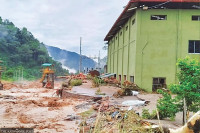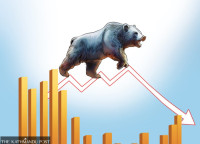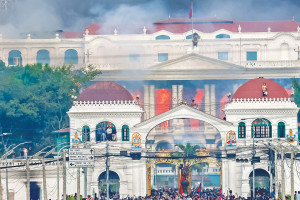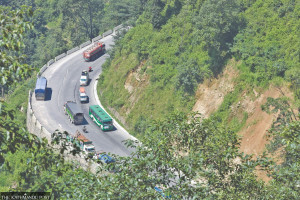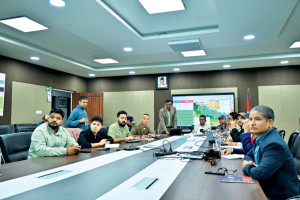Money
Nepal-made clothing brands were enjoying a great run and then the pandemic hit
With no sales for months, and record low demands, Nepali clothing brands find themselves in an unfamiliar position.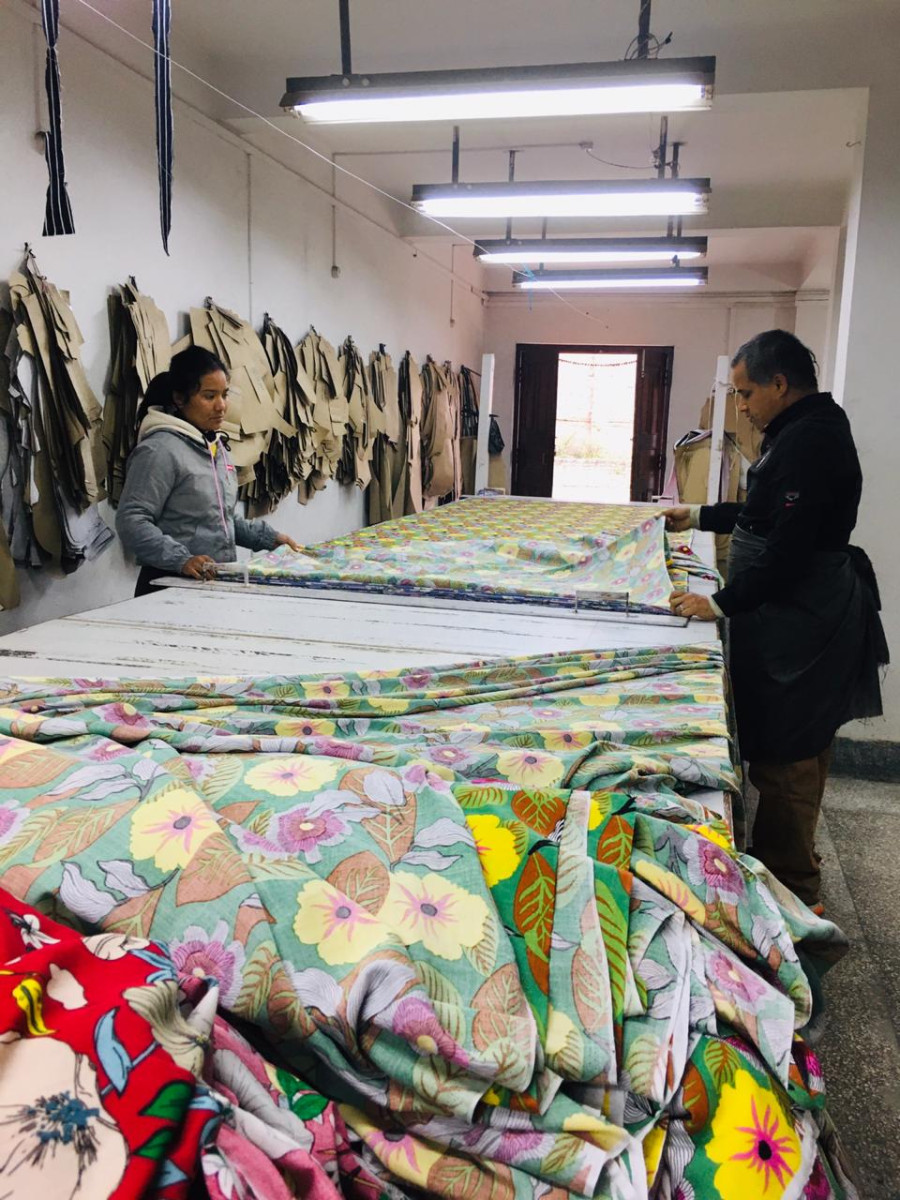
Tsering Ngodup Lama
When news of coronavirus first started appearing in early 2020, Sonam Dolkar Nepali, chief operating officer of Sonam Gears—a made-in-Nepal clothing brand, had no inkling that the disease would go on to negatively impact her business.
Her focus at that time was more on devising branding and promotion strategies for the brand’s 2020 spring/summer collection. But in mid-March, just a few days after the first batch of the brand’s spring/summer collection was dispatched from the warehouse to retail stores, Nepal went into lockdown, forcing her business to come to a complete stop.
“Even when the lockdown was first announced, we weren’t very worried. We thought that it would be lifted in two weeks and things would go back to normal,” said Nepali. “But when the lockdown got extended, that was when we realised our business was going to be hit badly.”
For made-in-Nepal clothing brands like Sonam Gears, the latter half of the current decade marked some of their best years. The period saw a huge demand in the local market for local clothing brands. Buoyed by the strong demand, many new clothing brands entered the market and existing brands like Sonam Gears began expanding. But the pandemic has turned the industry on its head. With retail stores closed for several months during the lockdown, and demand hitting record lows, the pandemic has forced the industry to rethink strategies as they navigate a drastically transformed market.
“The year 2015 was the turning point for made-in-Nepal clothing brands,” said Sonam Muktan, director of LOGO, a made-in-Nepal clothing brand, which started in early 2016. “With devastating earthquakes and a months-long blockade, we as a nation went through a lot that year. But what we went through that year, somehow, created a shift in people's mindset when it came to local brands. The general public started supporting local home-grown brands and people started taking pride in wearing them.”
When Sonam Gears started in 2011, its main target clientele was foreign tourists. “But between 2015 and 2016, we started seeing a very strong demand locally for our products,” said Nepali. “Today, the local market share makes up 80 to 90 percent of our total sales.”
Fuelled by the strong local demand, brands like Sonam Gears and LOGO expanded by rapidly increasing their physical retail footprint. From just one retail store in 2016, LOGO now has six stores, all in Kathmandu. Sonam Gears has 16 stores in Kathmandu, two in Pokhara, one each in Chitwan and Namche Bazaar.
For any retail store to succeed, it’s essential that they are located in areas that see maximum footfall. But retail space at such locations command exorbitant rent. For brands, the high footfall justified the high rent, but the pandemic has caused footfall to hit record lows, leaving brands scrambling.
On July 19, Ahmed Dulla, the CEO of The Factory Team—a brand known for its leather products—announced that it was permanently closing its Durbar Marg store due to high rent. In the midst of the lockdown, Sonam Gears too closed one of its stores in Thamel. “We were planning to close the store before the lockdown, but the lockdown just accelerated it. Rent for our retail outlets make up a significant portion of our fixed cost, and even though we haven’t had any sales at all our retail stores for nearly three months, rents still need to be paid,” said Nepali.
Muktan says that he has been fortunate to have very considerate landlords. “Had our landlords not cooperated with us, it would have made things much more difficult than it already is,” said Muktan.
Before the pandemic, LOGO, says Muktan, had plans to open two more stores, one each in Kathmandu and Pokhara, by the end of 2020. “We had already started discussion with various parties to take the plan forward, and then the pandemic hit. We have now decided to put those expansion plans on hold and rethink things,” said Muktan.
For brands, the primary goal now is to jumpstart revenue generation, which has hit rock bottom. But convincing people to shop for clothes at a time when the pandemic has forced many small to medium businesses to close and has left many unemployed isn’t going to be easy. To generate some revenue, many leading international apparel brands have started offering sales promotion and discounts. And local brands are following suit. For instance, Sonam Gear is offering 50 to 60 percent discount at select retail outlets. “We have an ongoing sale at all our retail outlets,” said Muktan. “But footfall at our stores is still negligible.”
Even though the lockdown has now been eased, Covid-19 still remains a threat and people are still hesitant to go out and shop. “Before the pandemic, we used to get around 40-50 customers daily at our stores,” said Nepali. “But these days, we get less than 15 people a day.”
Globally, clothing brands that have strong online and e-commerce presence have fared better than those that rely mainly on retail outlets for sale. But when it comes to shopping for clothes, a majority of Nepalis prefer to buy clothes at retail stores than online, and this is likely to make it more challenging for clothing brands to recover from the pandemic. “One of the reasons Nepalis prefer to buy clothes at physical retail stores is because many of them do not know their true size of clothing. We are now building a website that will have a proper size guide that customers can use to determine their true size,” said Muktan. “If we are to convince people to shop for clothes online, we will have to identify what is stopping them from doing so and address those issues and make the experience as convenient as possible.”
Amidst all the challenges the pandemic has brought forth, says Nepali, it has helped business owners realise one thing: the importance of focusing on e-commerce and digital presence in this post Covid-19 era. “We now have dedicated staff to handle our social media platforms, and we are also working on making our website much more user friendly and will soon be launching an online exclusive sale.”
Production cycle is another area of the industry that has been severely disrupted by the pandemic. Given that clothing brands start manufacturing clothes months before they are displayed at retail stores, the prolonged lockdown is likely to affect production cycle for several seasons. “In May, we usually start manufacturing our 2020 autumn/winter collection, but that has all been pushed back by the lockdown,” said Nepali.
For LOGO, the lockdown couldn’t have come at a worse time. In March, the brand usually begins production of its top-selling items like summer tops and dresses, which are sold in the peak summer months of May to August. “We lost that window period to the lockdown. By now, we should have already begun manufacturing our autumn/winter collection, but owing to the protracted lockdown we are still finishing the last of our spring/summer collection,” said Muktan. “The road ahead for local brands definitely looks tough, but for us to sustain and survive in these times of crisis, the government has a huge role to play. We need the right government policies and rescue packages to help the industry weather these times of crisis.”




 27.12°C Kathmandu
27.12°C Kathmandu
